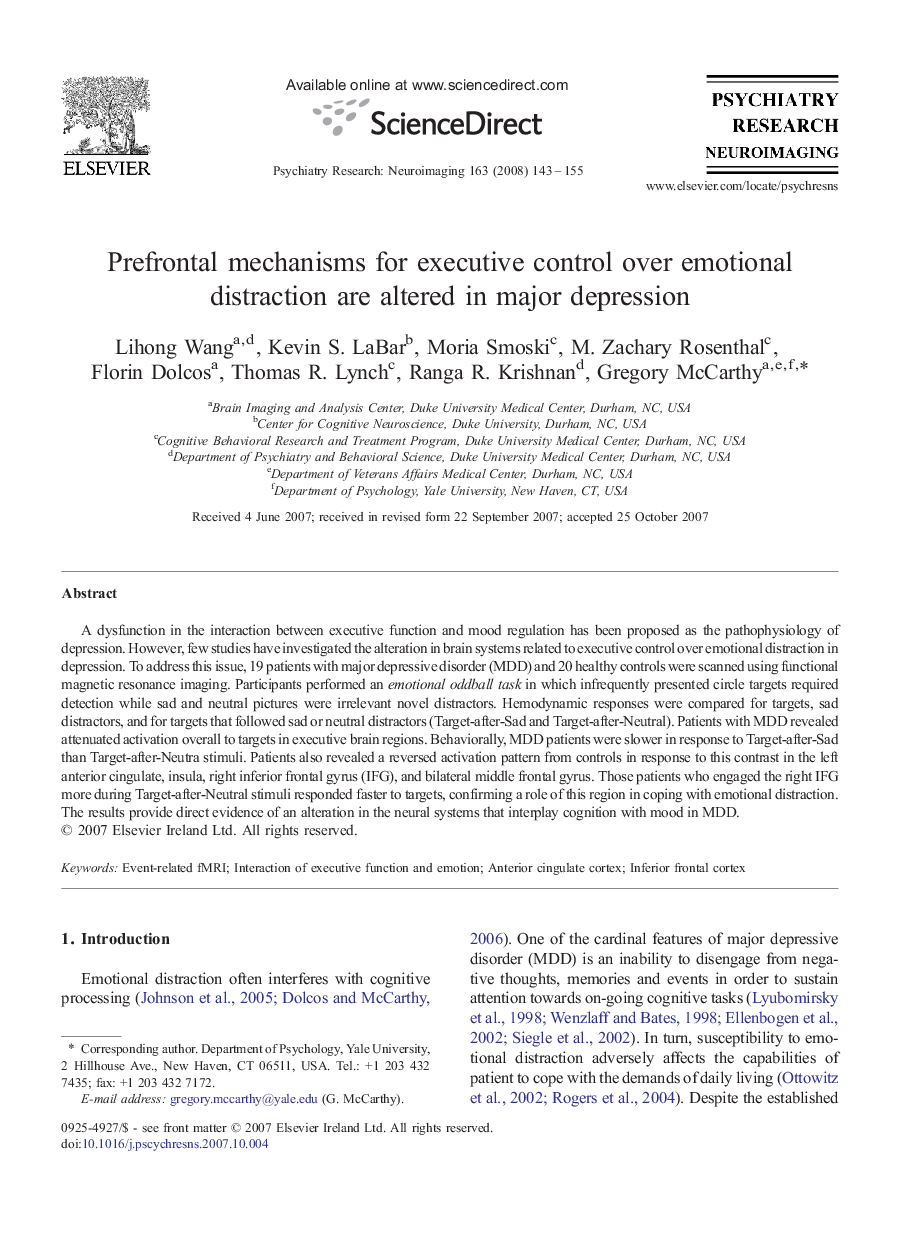| Article ID | Journal | Published Year | Pages | File Type |
|---|---|---|---|---|
| 334631 | Psychiatry Research: Neuroimaging | 2008 | 13 Pages |
A dysfunction in the interaction between executive function and mood regulation has been proposed as the pathophysiology of depression. However, few studies have investigated the alteration in brain systems related to executive control over emotional distraction in depression. To address this issue, 19 patients with major depressive disorder (MDD) and 20 healthy controls were scanned using functional magnetic resonance imaging. Participants performed an emotional oddball task in which infrequently presented circle targets required detection while sad and neutral pictures were irrelevant novel distractors. Hemodynamic responses were compared for targets, sad distractors, and for targets that followed sad or neutral distractors (Target-after-Sad and Target-after-Neutral). Patients with MDD revealed attenuated activation overall to targets in executive brain regions. Behaviorally, MDD patients were slower in response to Target-after-Sad than Target-after-Neutra stimuli. Patients also revealed a reversed activation pattern from controls in response to this contrast in the left anterior cingulate, insula, right inferior frontal gyrus (IFG), and bilateral middle frontal gyrus. Those patients who engaged the right IFG more during Target-after-Neutral stimuli responded faster to targets, confirming a role of this region in coping with emotional distraction. The results provide direct evidence of an alteration in the neural systems that interplay cognition with mood in MDD.
